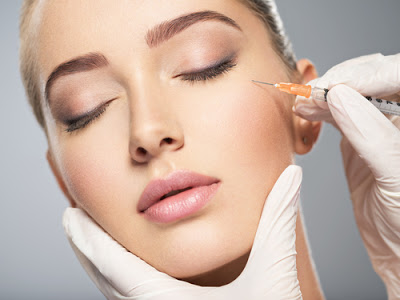PRP Therapy for Hair Loss
As hair loss, hair thinning and recession affects millions of men and women worldwide, it’s no wonder there are always new treatment methods coming to the fore. One such latest innovation is Platelet-Rich Plasma (PRP) and it’s being used with high success around the world.PRP therapy for hair loss is considered to be a great treatment option for hair growth because it has several scientifically based studies showing its effectiveness in increasing hair thickness, hair volume and the growth phase of the hair cycle. This is a three-step process in which a patient’s blood is collected, processed, and then reinjected into the scalp.
Growth factors have been used in medicine since 1970s to treat a range of health issues, including signs of aging, healing injured tendons, ligaments, muscles and in arthritis treatment etc. The good news for those with hair loss is that growth factors can help fuel the activity of the hair follicles and support new hair growth.
PRP therapy process
PRP therapy is a three-step process. In general, PRP therapy requires initial PRP at weeks 0, 3, 6 and 12.Step 1
Your blood is drawn (8-25ml) - typically from your arm and placed into a centrifuge, an apparatus that spins at faster speeds to separate fluids of different densities and this concentrate the platelets found in the blood sample.
Step 2
The normal concentration of platelets circulating in your blood is 150,000 to 450,000 platelets/microL, the platelet count in PRP can be 1 million platelets per microlitre. Your blood will have differentiated into in three layers after about 10 minutes in the centrifuge:
- Platelet-rich plasma
- Platelet-poor plasma
- Red blood cells
The platelet-rich plasma is collected into a syringe and then injected into areas of the scalp (subdermal 1.5-2.5mm) that need increased hair growth. This is a meticulous process with injections beginning across the scalp, approximately at every half inch over the area of thinning hair — but typically, the entire treatment takes less than an hour.
The Science of PRP
It seems a bit weird to draw blood from your own body and then re-inject the centrifuged blood again. So, what’s the deal?
As mentioned above, plasma contains white blood cells (WBC) and platelets, which are rich in growth factors.
Stem cells-undifferentiated cells that are proficient of adapting into other cell types during growth and development, in fact, play an important role in hair growth. These GF’s stimulate the stem cells that are found in the dermal Papilla as well as other constituents of the hair follicles. It is these exceptional platelet cells that boost the formation of new cellular growth, accelerates the rate and the degree of tissue healing and regeneration and response of the body to injury. Moreover, PRP is believed to stimulate blood flow to the area. This provides the hair follicles with oxygen and fundamental nutrients which leaves them in a stronger, healthier state.
Who it works for?
Platelet Rich Plasma therapy offers an excellent alternative for natural hair growth for those patients who are not candidates for surgery. It also is beneficial for surgical patients who want PRP therapy as a complementary procedure at the same time hair restoration surgery.Those who are experiencing hair loss are essentially a good candidate for PRP treatments, but patients with early hair loss tend to respond best. PRP is best used for patients with androgenic alopecia which is a genetically determined type of hair loss that typically occurs along the top of the head. However, Patients with II-III grade of alopecia had enhanced results compared to patients with more advanced alopecia.
For best results, patience and consistency is the key. Treatments are typically performed 3-4 times in the first 3 months, and then maintenance treatments are done afterward, depending on the individual patient's response and results. Following this protocol, Results showed that a noticeable increase in the rate of hair growth was observed between the 3rd and 6th months. Hair thickness followed an increasing trend with a significant peak at 3 months.
Who Shouldn’t Get PRP Treatment for Hair Loss?
Despite the fact that major side effects have not been found in qualified patients, PRP therapy is suitable for everyone. If you have a history of alcohol abuse or heavy drug use or a history of smoking, you should avoid PRP hair treatment.Patients may not qualify for PRP treatment if they have been diagnosed with any of the following:
- Chronic skin disease
- Cancer
- Hypofibrinogenemia
- Metabolic disorder
- Sepsis
- Metabolic disorders
- Platelet dysfunction syndromes
- Hemodynamic instability
- Chronic liver disease
- Platelet dysfunction syndromes
- Thrombocytopenia
- Acute and chronic infections
Mail us: radianceskin123@gmail.com
Book an appointment: radianceskinandhaircare.com/book-appointment







PRP is term as Platelet Rich Plasmas Therapy. It is the quickest and safest method for hair loss treatment in which patients own blood is drawn, processed and then injected on the bald scalp. How Long Does It Take To Recover From Platelet-Rich Plasma?
ReplyDeletenice blog
ReplyDeletePRP Hair Treatment in Islamabad
Hi,
ReplyDeleteYour post will be rather good, and I’m sure some will find it interesting because it’s about a topic that’s as widely discussed as others.It is amazing and wonderful to visit your site.
Regards,
PRP Injection in Basildon
I have read your blog its an excellent & informative blog… Nice Information, your blog is sharing unique information....
ReplyDeleteKeep sharing with us...
Regards,
PRP Injection in Greenwich
I found a hair transplant center in Turkey.
ReplyDeletePrp application is free for patients who have had hair transplantation.
https://ztyhealth.com/hair-transplant-in-turkey